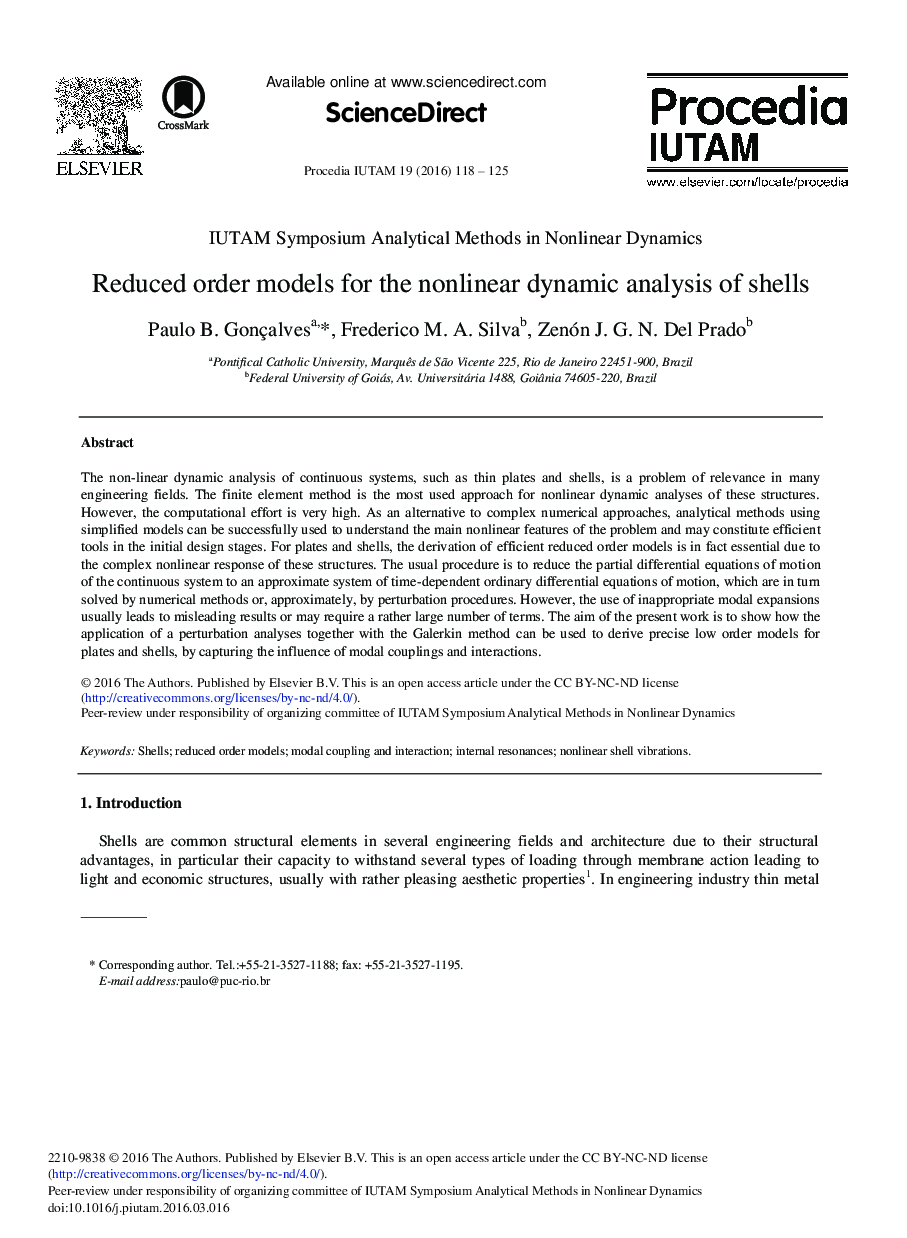| Article ID | Journal | Published Year | Pages | File Type |
|---|---|---|---|---|
| 864703 | Procedia IUTAM | 2016 | 8 Pages |
The non-linear dynamic analysis of continuous systems, such as thin plates and shells, is a problem of relevance in many engineering fields. The finite element method is the most used approach for nonlinear dynamic analyses of these structures. However, the computational effort is very high. As an alternative to complex numerical approaches, analytical methods using simplified models can be successfully used to understand the main nonlinear features of the problem and may constitute efficient tools in the initial design stages. For plates and shells, the derivation of efficient reduced order models is in fact essential due to the complex nonlinear response of these structures. The usual procedure is to reduce the partial differential equations of motion of the continuous system to an approximate system of time-dependent ordinary differential equations of motion, which are in turn solved by numerical methods or, approximately, by perturbation procedures. However, the use of inappropriate modal expansions usually leads to misleading results or may require a rather large number of terms. The aim of the present work is to show how the application of a perturbation analyses together with the Galerkin method can be used to derive precise low order models for plates and shells, by capturing the influence of modal couplings and interactions.
